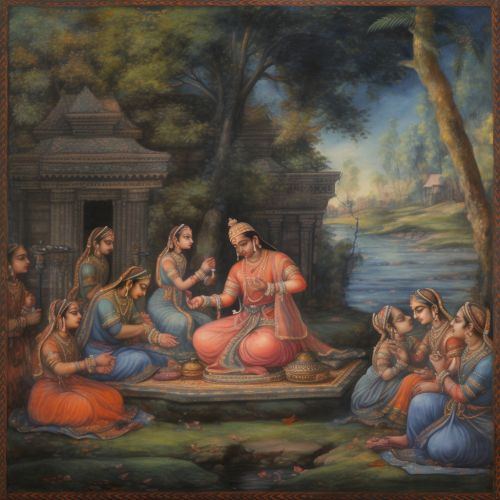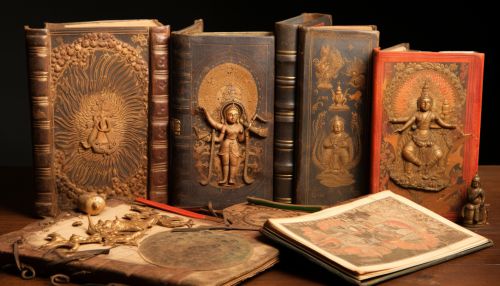Puranic scriptures
Introduction
The Puranic scriptures, also known as the Puranas, are a genre of important Hindu texts that narrate the history of the Universe from creation to destruction, genealogies of kings, heroes, sages, and demigods, and descriptions of Hindu cosmology, philosophy, and geography. These scriptures are considered as the fifth Veda and have been instrumental in the dissemination of popular religious and cultural norms in India.
Origin and Development
The term 'Purana' in Sanskrit means 'ancient' or 'old'. The Puranic scriptures are believed to have been composed between the 3rd and 10th century CE, although they contain portions that are much older. The Puranas are considered as the fifth Veda by many Hindus, and they were designed to elucidate the truths of the Vedas, which are the oldest and most sacred Hindu scriptures. The Puranas were developed as a means to make the teachings of the Vedas accessible to the common people.
Classification
The Puranic scriptures are traditionally classified into 18 major Puranas and 18 minor Puranas (Upa Puranas). The major Puranas are further divided into three categories based on the deity they primarily focus on: Brahma Puranas, Vishnu Puranas, and Shiva Puranas. Each of these categories contains six Puranas. The most popular among these are the Bhagavata Purana, which glorifies Lord Vishnu, and the Shiva Purana, which extols Lord Shiva.
Content
The Puranic scriptures cover a wide range of topics. They contain cosmogonic tales, legends of gods, goddesses and heroes, genealogies of the gods, and myths associated with the creation, preservation, and destruction of the universe. They also provide information about ancient Indian history, culture, geography, astronomy, politics, and society. The Puranas also contain philosophical discourses on topics such as dharma (righteousness), karma (action and consequence), moksha (liberation), and bhakti (devotion).
Influence and Significance
The Puranic scriptures have had a profound influence on Indian culture and society. They have shaped the religious, cultural, and social norms of Hindu society and have played a key role in the preservation and transmission of ancient Indian wisdom and knowledge. The Puranas have also influenced Indian art, architecture, literature, and music.
Criticism and Interpretation
The Puranic scriptures have been subject to various interpretations and criticisms. Some scholars question the historical authenticity of the Puranas, while others view them as valuable sources of historical information. The Puranas have also been criticized for their caste-based narratives and patriarchal bias. However, they are also interpreted as symbolic texts that convey deeper philosophical truths.
Conclusion
In conclusion, the Puranic scriptures are an integral part of Hindu religious literature. They provide a rich source of information about ancient Indian history, culture, philosophy, and cosmology. Despite the criticisms and controversies surrounding them, the Puranas continue to be revered and studied for their spiritual and philosophical insights.
See Also


Note: The image should show a collection of ancient Hindu scriptures, with focus on the Puranas. The scriptures should be old and well-worn, indicating their age and use. The image should be taken in good lighting, with the scriptures arranged in an aesthetically pleasing manner. The focus should be on the Puranas, but other scriptures can also be visible in the background. The image should not contain any people or modern objects.
